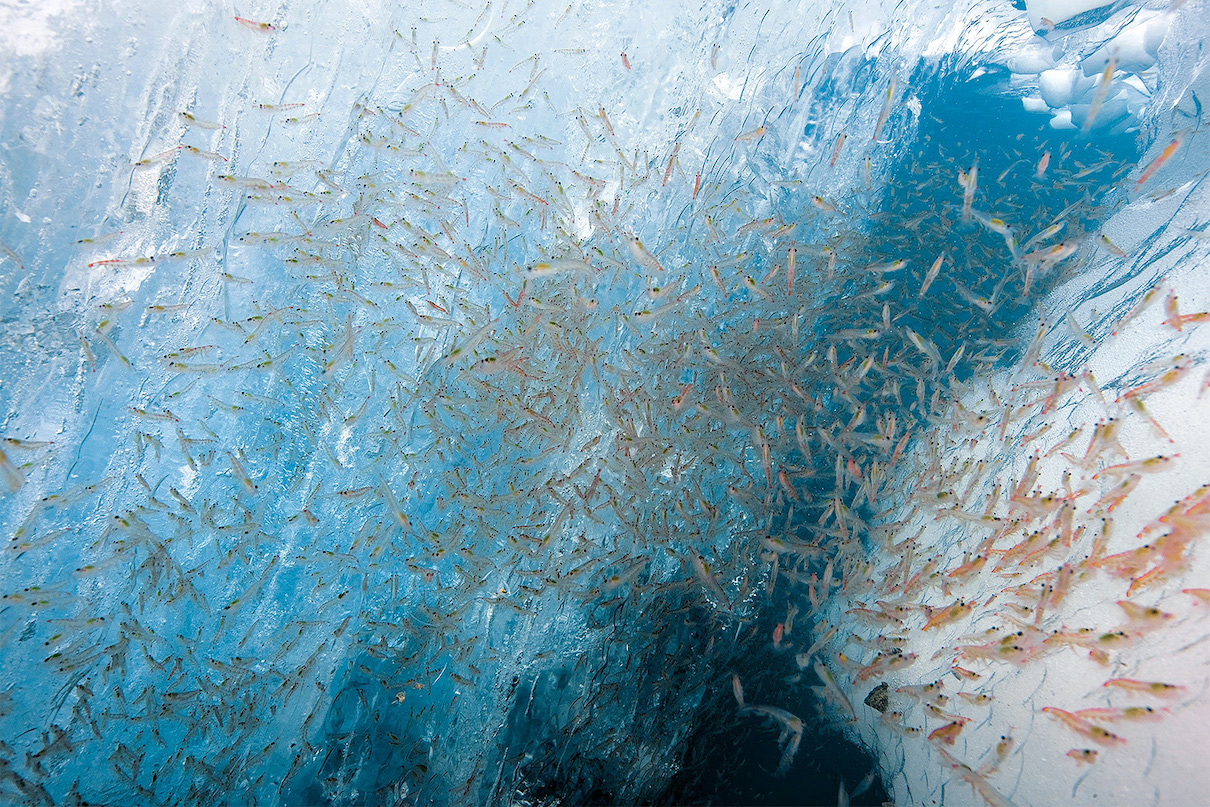
Antarctic krill — tiny, filter-feeding crustaceans that live in the Southern Ocean — have long existed in mind-boggling numbers. A 2009 study estimated that the species has a biomass of between 300 million and 500 million metric tons, which is more than any other multicellular wild animal in the world. Not only are these teensy animals great in number, but they’re known to lock away large quantities of carbon through their feeding and excrement cycles. One study estimates that krill remove 23 million metric tons of carbon each year — about the amount of carbon produced by 35 million combustion-engine cars — while another suggests that krill take away 39 million metric tons each year. Krill are also a main food source for many animals for which Antarctica is famous: whales, seals, fish, penguins, and a range of other seabirds.
But Antarctic krill (Euphausia superba) are not “limitless,” as they were once described in the 1960s; they’re a finite resource under an increasing amount of pressure due to overfishing, pollution, and climate change impacts like the loss of sea ice and ocean acidification. While krill are nowhere close to being threatened with extinction, the 2022 report from the Intergovernmental Panel on Climate Change indicated that there’s a high likelihood that climate-induced stressors would present considerable risks for the global supply of krill.
“Warming that is occurring along the Antarctic Peninsula and Scotia Sea has caused the krill stocks in those areas to shrink and the center of that population has moved southwards,” Kim Bernard, a marine ecologist at Oregon State University, wrote to Mongabay via email while stationed in the Antarctic Peninsula. “This tells us already that krill numbers aren’t endless” […]
Read more on Mongabay.